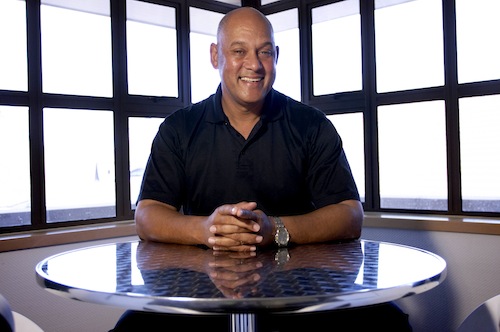
Imagine a computer with 23TB of RAM and 2 800 processor cores, generating 60 trillion floating-point operations per second. That’s what Dell, the CSIR, the Centre for High Performance Computing and the University of Cambridge have built in Cape Town.
It’s being billed as the fastest supercomputer in Africa. Housed by a CSIR facility, the setup was ranked as one of the top-500 supercomputers on earth at this year’s Supercomputing Conference in Seattle.
The CSIR hopes it can put it to use solving African problems, empowering African research and encouraging foreign academics to come to SA to work.
The CSIR’s requirements were simple: it needed a new supercomputer and it wanted it to rank in the prestigious list put out by the Supercomputing Conference — and it needed it in less than a month if it was to qualify.
Dell Africa GM Stewart van Graan says the company had the machine operational within three weeks of receiving the order. Dell, he says, is seeing more interest in supercomputers from mainstream businesses such as retailers and mining and exploration companies. “Any time you’re dealing with as much data as they do, the application of a supercomputer becomes relevant.”
Much of the research required to build a computer like the one the CSIR requested comes from Dell’s longstanding relationship with Cambridge University, where it assists in the formulation of white papers concerning supercomputing.
Though the CSIR hopes to make the computer available to anyone in Africa in need of its capabilities, Van Graan says the greatest obstacle — and one that affects much of Africa — is lack of bandwidth. “Power and bandwidth are the two biggest challenges in Africa,” he says.
Though Dell says it “leveraged global relationships” in building the machine, local people were trained to maintain it. This was one of the stipulations of the deal with the CSIR.
Van Graan says that as supercomputers become more common in Africa, they will be invaluable in solving real-world problems through simulations, like looking at traffic systems and urban growth. He says more university departments, from finance to the humanities, have to crunch more data and that SA is now better equipped to deal with it.
“Big data is no longer just the realm of scientific research,” he says.
The new supercomputer occupies two and a half server racks at the CSIR instead of the 12 previously required. Nevertheless, it consists of 2 800 cores, of which most jobs only require 100 or 200. Fortunately, the cores can be split and used to process simultaneous batch jobs.
The system supports both Intel and AMD processors, though Intel chips are used in this instance.
The CSIR’s previous supercomputer processed about 30 trillion floating-point operations a second, better known as teraflops. Not only has the new machine doubled performance and greatly reduced its use of electricity, but cost a third of its predecessor and occupies less than a quarter of the space.
Van Graan declines to say how much the machine cost. The CSIR’s system was paid for by the department of science & technology.
He is quick to put the Cape Town supercomputer in context: though its having 2 800 cores sounds impressive, the biggest supercomputer in the world has 500 000 cores. “The gap between the top 20 and top 100 is huge, as is the gap between the top 100 and, say, the top 200.”
Dell’s most powerful supercomputer ranked at 31st on the list and consists of 15 500 cores. It’s located at the University of Colorado.
Happy Sithole, director of the Centre for High Performance Computing who was involved with the project from the outset, says the CSIR hopes the system will allow it to work on solutions for challenges such as HIV/Aids, malaria and climate change by building complex scientific and mathematical models.
The complexity of a model used to assess the impact of a tsunami, for example, requires huge data sets. Sithole says the supercomputer is already being used by different research groups around the country who have been selected for the type of work they do.
“For example, the group that works on the HIV mutation mechanism looks at understanding how the HI virus mutates in a human immune system,” Sithole says. “This type of study requires a large number of combinations that should be computed and thus the supercomputer provides a quick way of understanding all the possible scenarios, which could otherwise not have been explored.”
Academic institutions are provided access if their projects “meet the criteria of problems that are relevant for parallel processing” and if the research is in areas that are in the government priority areas and helps train students. — Craig Wilson, TechCentral
- Subscribe to our free daily newsletter
- Follow us on Twitter or on Google+ or on Facebook
- Visit our sister website, SportsCentral (still in beta)




